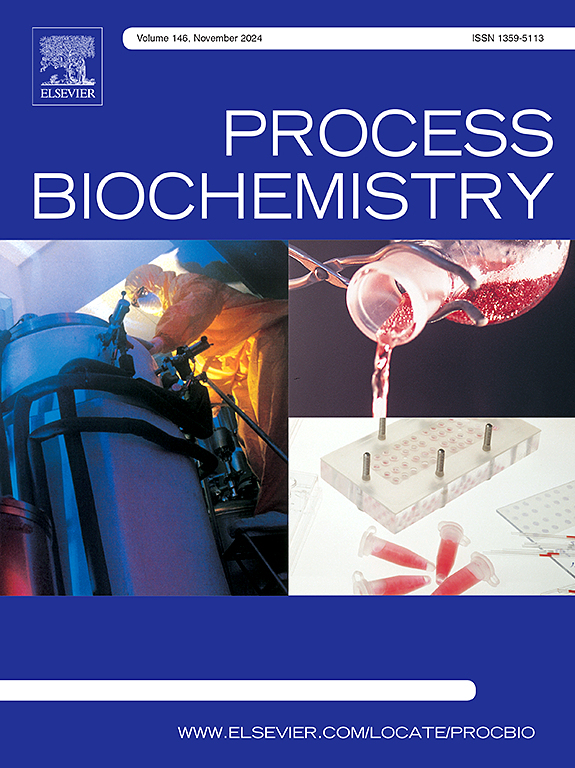Polyhydroxyalkanoates as matrices for enzyme immobilization: In vivo and In vitro approaches
IF 3.7
3区 生物学
Q2 BIOCHEMISTRY & MOLECULAR BIOLOGY
引用次数: 0
Abstract
Since polyhydroxyalkanoates (PHAs) are biodegradable, bioresourced and biocompatible, they are versatile biopolymers having huge applicability in food packaging, biomedicine, drug delivery systems, production of biofuels and many other fields. With the use of waste carbon sources or renewable feedstocks, their process of production can be made cost effective. Moreover, just by exploiting PHA synthesis enzymes, they can also be produced in vivo i.e., without employing microbial cell. Thanks to this adaptable PHA nanogranular technology, it also has become possible to immobilize a huge variety of enzymes, creating a novel and promising set of immobilization techniques. In comparison to soluble enzymes, immobilized enzymes have a number of significant benefits, like increased stability, higher catalytic activity, extended shelf life, recycling for repeated use and easier purification of the product, however, showing some limitations (like improper orientation, substrate diffusion and enzyme deactivate etc) as well. Due to directed display and a high surface area to volume ratio, the PHA based enzyme immobilization platform offers flexibility, stability and excellent functionality. The nano or micro beads of PHA produced in vitro, act as matrix for enzyme immobilization being both economically appealing and potentially applicable in a variety of process circumstances. The developments in synthetic biology and material science to produce more effective, adaptable PHA-enzyme systems for industrial and environmental applications, are future prospects for enzyme immobilization on PHA. It is important to optimize enzyme-PHA interactions for enhanced efficiency and cost effective industry level production processes. This review highlights the importance and great utility of PHA for enzyme immobilization. It mainly focuses on the in vivo and in vitro enzyme immobilization studies done so far, using latest technologies to enhance the properties of immobilized enzymes.
作为酶固定化基质的聚羟基烷酸酯:体内和体外方法
由于聚羟基烷酸酯(PHAs)具有生物降解性、生物来源性和生物相容性,因此是一种多功能生物聚合物,在食品包装、生物医学、给药系统、生物燃料生产和许多其他领域具有巨大的应用价值。利用废弃碳源或可再生原料,可以使其生产过程具有成本效益。此外,只需利用 PHA 合成酶,它们也可以在体内生产,即无需使用微生物细胞。由于这种 PHA 纳米颗粒技术适应性强,还可以固定多种酶,从而创造出一套新颖而有前途的固定技术。与可溶性酶相比,固定化酶有许多显著的优点,如稳定性更强、催化活性更高、保质期更长、可回收重复使用以及更容易纯化产品,但也有一些局限性(如定向不当、底物扩散和酶失活等)。由于定向显示和高表面积体积比,基于 PHA 的酶固定化平台具有灵活性、稳定性和出色的功能性。体外生产的 PHA 纳米或微珠可作为酶固定的基质,既经济又适用于各种工艺环境。合成生物学和材料科学的发展,为工业和环境应用提供了更有效、适应性更强的 PHA-酶系统,这是 PHA 上酶固定化的未来前景。优化酶与 PHA 的相互作用对于提高效率和成本效益的工业级生产工艺非常重要。本综述强调了 PHA 在酶固定化方面的重要性和巨大作用。它主要侧重于迄今为止所做的体内和体外酶固定化研究,利用最新技术提高固定化酶的特性。
本文章由计算机程序翻译,如有差异,请以英文原文为准。
求助全文
约1分钟内获得全文
求助全文
来源期刊

Process Biochemistry
生物-工程:化工
CiteScore
8.30
自引率
4.50%
发文量
374
审稿时长
53 days
期刊介绍:
Process Biochemistry is an application-orientated research journal devoted to reporting advances with originality and novelty, in the science and technology of the processes involving bioactive molecules and living organisms. These processes concern the production of useful metabolites or materials, or the removal of toxic compounds using tools and methods of current biology and engineering. Its main areas of interest include novel bioprocesses and enabling technologies (such as nanobiotechnology, tissue engineering, directed evolution, metabolic engineering, systems biology, and synthetic biology) applicable in food (nutraceutical), healthcare (medical, pharmaceutical, cosmetic), energy (biofuels), environmental, and biorefinery industries and their underlying biological and engineering principles.
 求助内容:
求助内容: 应助结果提醒方式:
应助结果提醒方式:


